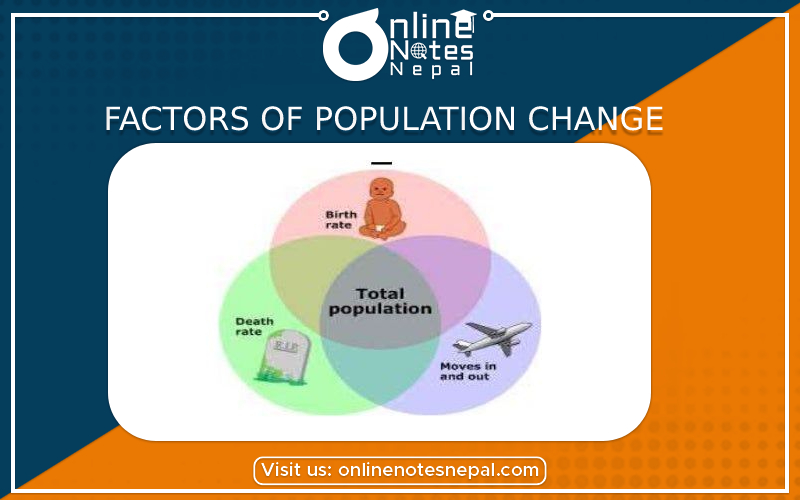Published by: Mandira
Published date: 27 Jan 2022

The total number of people living in a particular area is known as a population. The factors that cause population change includes increased food production, improved health care services ,immigration, and high birth rate. Birth, death, and migration are the main factors of population change.
The factors that affect population is described below:
Birth
Birth is the process of producing a new one. It is also one of the major factors of change in population. This is the factor that always results in an increase in the population. The size of the population of the country is always observed by the birth rate of that area. Birth is determined by fecundity power of women. Fecundity is said as the biological capacity of women to give birth to new one. The childbearing time of any women is known as fecundity. It continues from 15 to 49 year of age. It is always different from one person to another person.
Death
Death is the natural factor of population change. Death always helps to decrease the population. Always the number of death should be higher than birth in order to decrease the population. But nowadays the death rate is becoming less due to health education, facilities of health services, maintenance of balance diet, proper care and daily exercise etc. If there will be less birth rate and more death rate then there will be less population.
Migration
The process of movement of people from one place to another in search of good food, clothes, facilities etc. for permanent settlement is said to be migration. It is also one of the major factors of population change. The factors which are responsible for migration is known as pull and push factors . We all have seen the people from village area come to city area for their good life. This is also one of the factors of migration.
There are mainly two modes of migration. They are :
Internal migration
Internal migration is the migration which is done inside the boundary of a country. The movement of people from one place to another place inside the country is known as internal migration. It doesn't affect the country but it affects the place from where people has moved and the place in which they move in (i.e. both in place of origin and destination). The population of theplace of origin decreases whereas the population of the destination or the place where they have moved may increase. Nowadays we have seen people moving to the place where they can fulfill their all needs. For example: in our country, Nepal, people they migrate from Hill and Mountain to Terai Region as there are many facilities thanHilly Region and Mountain region. There are huge useof natural resources in the place where the flow of migration is high but in the place of origin all the services and facilities are not enough in the place from where they have moved due to the high density of population and people have to work hard for living their life.
International migration
The movement of the people from one country to another country for the settlement is called international migration. People migrate from one country to another country because of good employment opportunities, education, health facility, and other good opportunities. This type of migration affects the population of the country from where they move and in the place where they move. It means it will affect both origin and destination place.